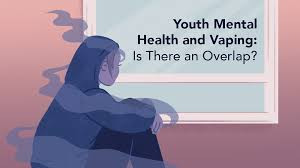Vaping and Youth Health: A Growing Concern
Over the past decade, vaping has surged in popularity, especially among teenagers. Marketed as a safer alternative to smoking, e-cigarettes and vape pens have captivated the youth with their sleek designs, enticing flavors, and the perception of being less harmful. However, the rise in vaping among teenagers has sparked serious concerns about its long-term health implications and societal impact. This blog delves into the factors driving this trend, the associated risks, and potential solutions to address this growing issue.
Why Are Teenagers Turning to Vaping?
1. Enticing Flavors:
E-cigarettes come in a wide range of flavors, from fruity options like mango and watermelon to dessert-like choices such as chocolate and vanilla. These flavors appeal to younger audiences, making vaping more attractive and masking the harshness of nicotine.
2. Peer Pressure and Social Media Influence:
Social media platforms are rife with content promoting vaping as trendy and harmless. Influencers and peer groups often glamorize vaping, leading to its normalization among teenagers.
3. Perception of Safety:
Many teens believe that vaping is safer than smoking traditional cigarettes, often unaware of the potential health risks associated with e-cigarettes.
4. Ease of Access:
Despite age restrictions, teenagers often obtain vaping products through online sales, older peers, or even lax enforcement in certain retail stores.
5. Stress and Anxiety:
Adolescents increasingly use vaping as a coping mechanism for stress, anxiety, and academic pressures, further driving its adoption.

Health Risks of Vaping Among Teenagers
1. Nicotine Addiction:
Most e-cigarettes contain nicotine, a highly addictive substance. Teenage brains are still developing, making them more susceptible to addiction. Early exposure to nicotine can also affect cognitive functions such as memory and attention.
2. Respiratory Issues:
Vaping can irritate the lungs and airways, leading to symptoms like coughing, wheezing, and shortness of breath. Some cases of severe lung injury, termed EVALI (E-cigarette or Vaping Use-Associated Lung Injury), have been linked to vaping.
3. Potential Toxicity:
E-cigarettes contain various chemicals, including propylene glycol, glycerin, and flavoring agents, which can produce harmful byproducts when heated. These substances may have unknown long-term effects on lung and overall health.
4. Increased Risk of Smoking:
Studies suggest that teenagers who vape are more likely to transition to smoking traditional cigarettes later in life, contrary to the belief that vaping helps avoid smoking.
5. Mental Health Impact:
While some teens turn to vaping to cope with stress, nicotine can exacerbate anxiety and depression over time, creating a vicious cycle.
Societal and Policy Concerns
1. Regulatory Challenges:
Despite regulations restricting the sale of vaping products to minors, enforcement remains inconsistent. Online sales and poorly regulated markets continue to provide easy access for teenagers.
2. Advertising Practices:
E-cigarette companies often target younger demographics through vibrant packaging, youth-oriented advertising, and sponsorship of events popular with teenagers.
3. Parental and Educational Gaps:
Many parents and educators lack awareness of the prevalence of vaping and its associated risks. This knowledge gap hinders effective prevention and intervention efforts.
Tackling the Problem: Solutions and Interventions
1. Stronger Regulations and Enforcement:
-
Governments should impose stricter regulations on the marketing and sale of vaping products, including banning flavors that appeal to youth.
-
Age verification protocols for online sales must be improved to prevent underage purchases.
2. Awareness Campaigns:
-
Launch public health campaigns targeting teenagers, parents, and educators to debunk myths about vaping and highlight its risks.
-
Use social media to counteract pro-vaping content with factual, relatable information.
3. School-Based Programs:
-
Integrate vaping education into school curriculums to inform students about the health implications.
-
Encourage peer-led initiatives where teenagers educate their peers about the dangers of vaping.
4. Support for Nicotine Addiction:
-
Provide accessible resources for teens struggling with nicotine addiction, such as counseling and nicotine replacement therapies.
-
Train healthcare providers to screen for vaping habits during routine check-ups and offer support.
5. Parental Engagement:
-
Educate parents about the signs of vaping and how to have open, non-judgmental conversations with their children.
-
Encourage parents to model healthy behaviors and set clear expectations regarding substance use.
-

The Long-Term Implications
Unchecked, the vaping epidemic among teenagers could lead to a public health crisis. Beyond the immediate risks, the long-term consequences of vaping on adolescent health remain largely unknown. As the first generation to grow up with widespread e-cigarette use enters adulthood, researchers and healthcare professionals are bracing for potential revelations about chronic conditions linked to vaping.
Addressing this issue requires a collaborative effort from policymakers, educators, parents, and healthcare providers. By prioritizing prevention, education, and support, society can protect the health and well-being of future generations.
Conclusion
Vaping among teenagers is a multifaceted issue that demands urgent attention. While e-cigarettes were initially marketed as a tool for smoking cessation, their appeal to youth has turned them into a public health challenge. Understanding the driving factors behind teenage vaping and implementing targeted solutions is essential to curb this trend and safeguard the health of young people. With collective action, it is possible to create a healthier future free from the risks of vaping.











Top Comments You Can't Miss!